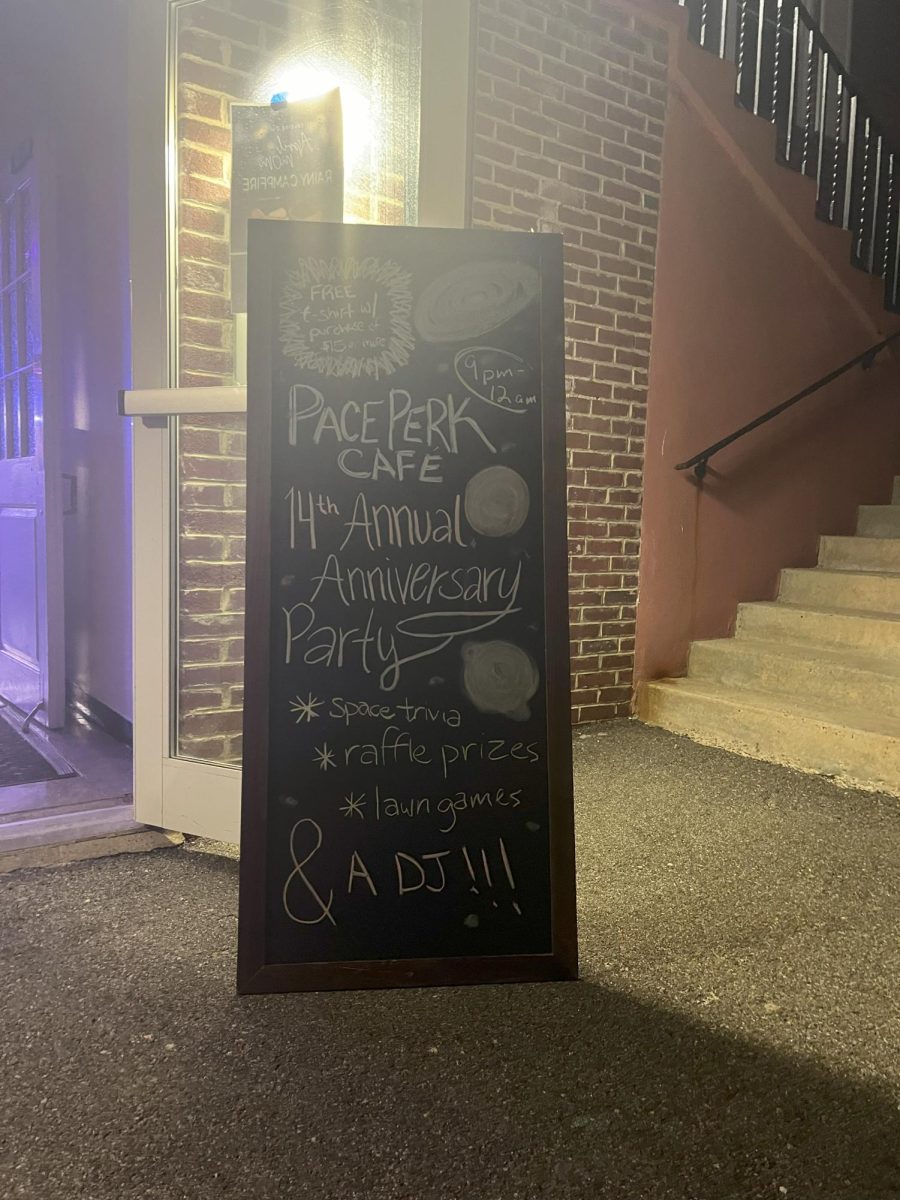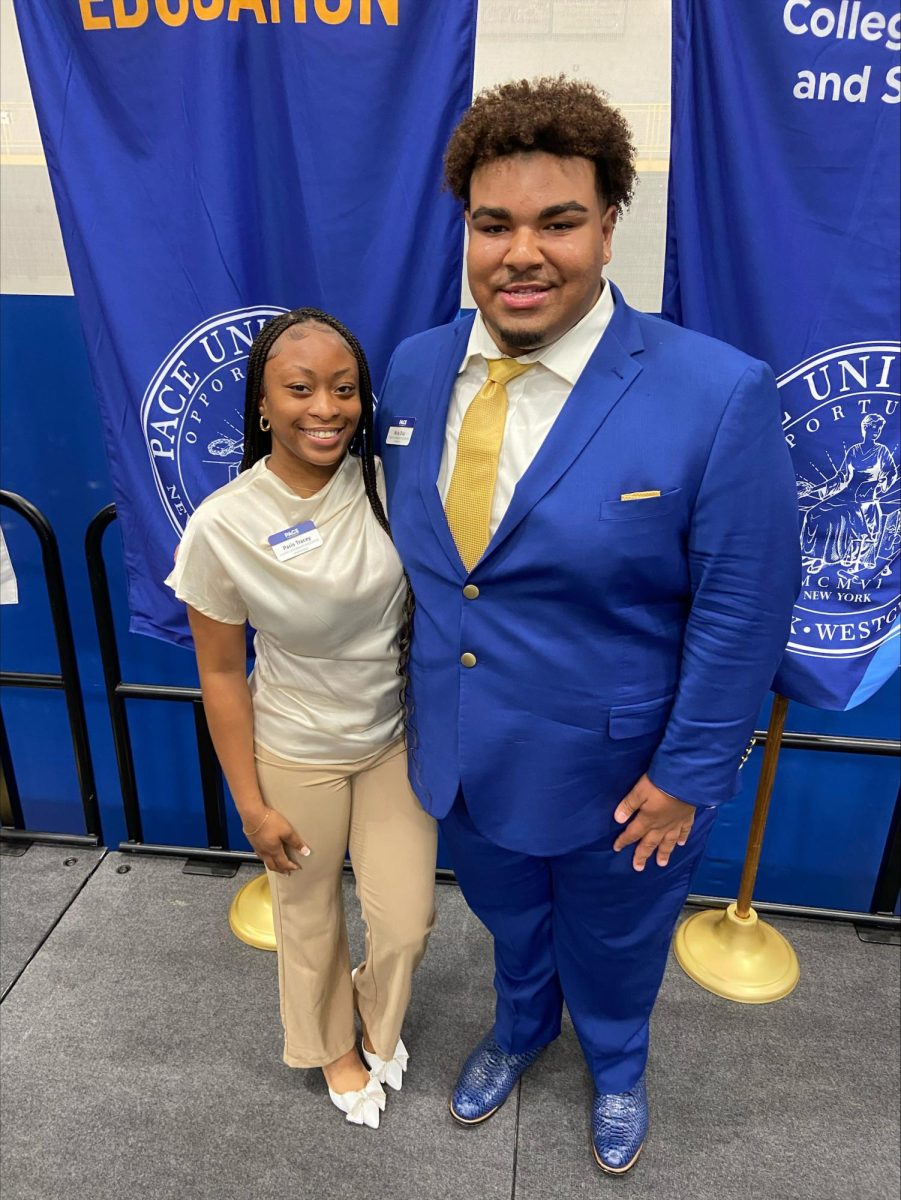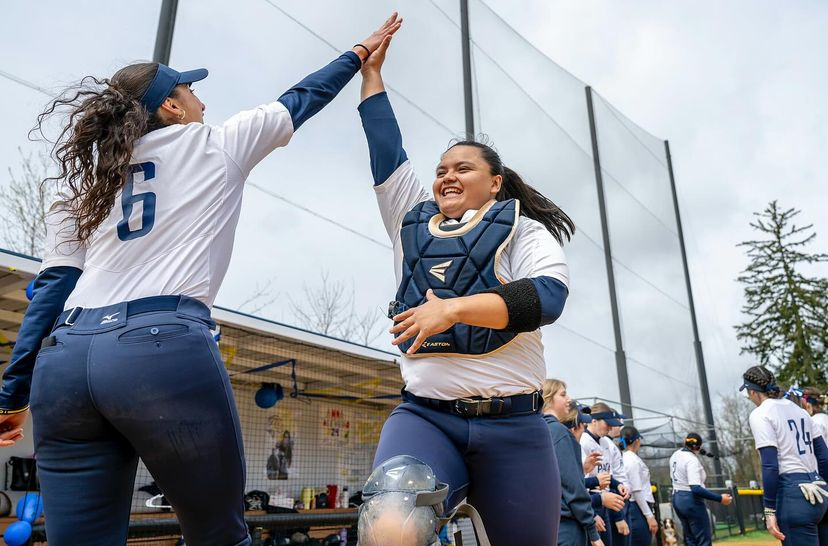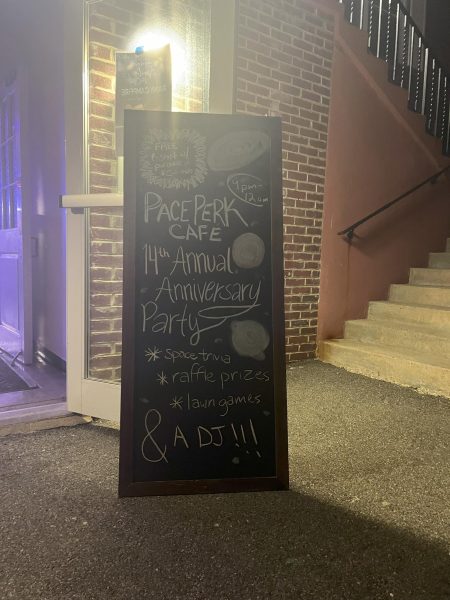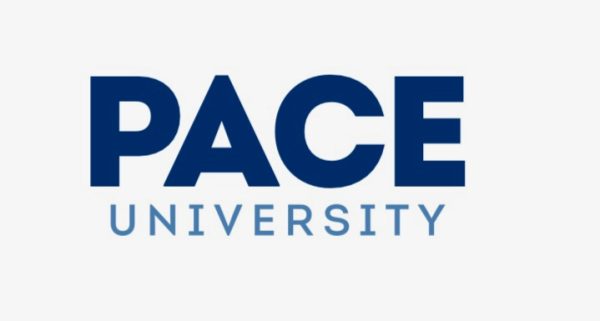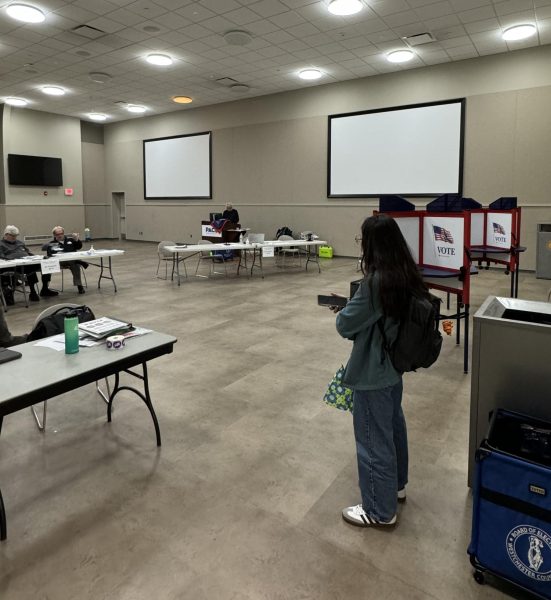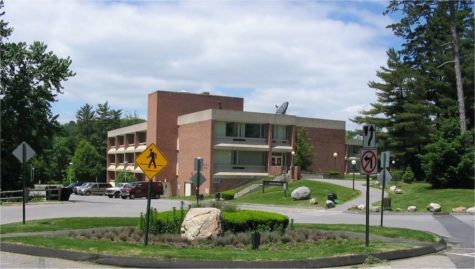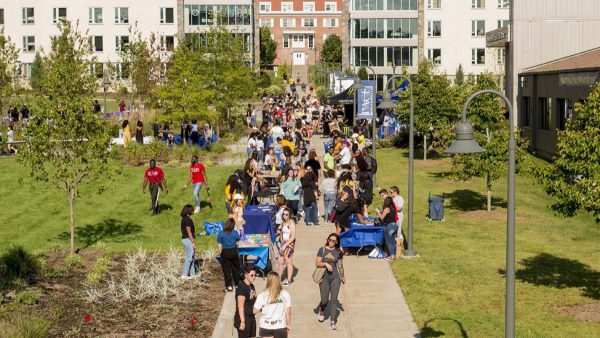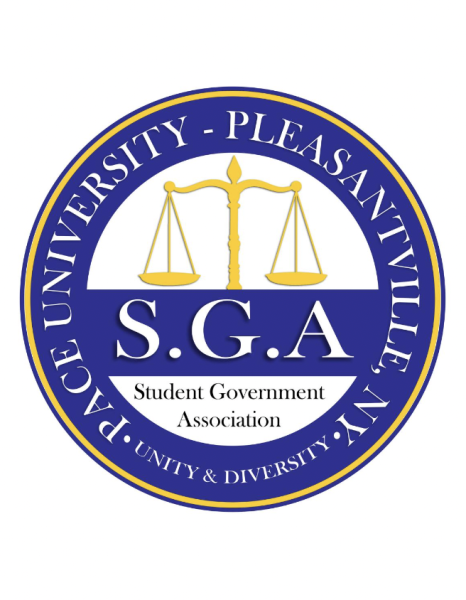Full Text of President Krislov’s State of the University speech
President Krislov announced the first round of budget cuts as a result of COVID-19 on May 8.
February 25, 2019
Good afternoon, and thank you, David.
Welcome to my first State of the University address. I have now been at Pace for three semesters. I have had time to get to know this University. To meet so many of our students, faculty, and staff. To learn about our history and our legacy. I have talked with and listened to so many of you, in both formal and informal settings. And yet also know that we in the administration must do more to communicate with everyone in the University Community.
That is why I am here today — to lay out my vision for the future of Pace University. We see many opportunities ahead of us, and we will embrace them. We see some challenges, too, and we will confront them. I want to outline our plans. And I want to make clear that we need your input and your help. The trustees, the provost, the deans, everyone in our leadership — we know that we must all work together to build our University’s future. Most important, I want to assure you that despite the hard work we still must do, the state of Pace University is strong — and it is getting stronger.
***
This University has a vital mission. We create opportunities for students from all backgrounds. Through our instructional programs, our academic research, and our public service, we educate people, empower people, and transform lives. That is what we have done for more than 100 years. And everything we’re doing now is to
ensure that we’ll be able to do that for at least another 100 more.
***
A symbol of our commitment is the remarkable transformation of One Pace Plaza and 41 Park Row. Everyone who has seen the new spaces loves them. If you’ve haven’t seen them, please come visit. We have added state-of-the-art academic facilities and beautiful student and faculty spaces. We tore down concrete walls and replaced them with glass. We opened Pace up to New York City. Together with the transformation of the Pleasantville campus that was completed a few years ago, this work symbolizes this University’s investment in our students, faculty, and staff and a commitment to our strong future. Because there is much more to come.
***
Here is our vision for this university: We want Pace to be known by the world the way we know it. We want us to be known as the best place in the country for a world-class, hands-on, skillsbased education grounded in the liberal arts. That is our heritage, our DNA. It is what we do. Students come to Pace to get a first-rate
education in the country’s most important metropolitan area. They come to us to get a great first job that will start them on a stellar career. They follow the Pace Path, or the Law School’s Path to Practice. These paths work. Our students are well prepared not only for a first job, but for a lifetime. Our Career Services office reports that 87 percent of our undergraduates and 93 percent of our master’s graduates were employed, continuing their education, or doing volunteer or military
service six months after graduation. For both undergrads and master’s graduates, employment rates were 10 percent higher than national averages. And at the law school, 92 percent of graduates were employed 10 months after graduation. That across the country, higher education institutions are facing financial pressure. Our costs keep going up, but we also know that we must keep college affordable for our students. The demands on colleges and universities are changing. Students are no longer only — or even primarily — 18- to 22-year-olds seeking a four-year, residential experience. Students want degrees faster. They want classes on schedules that work for them. They want the flexibility to learn in-person or online, or through some hybrid combination of the two. In the northeast, we are facing the demographic reality that America’s population is shifting, and there are fewer people of traditional college age in the region. It has also become more difficult to attract international students — although we are doing better on that front than many other colleges and universities. Pace will thrive, but for that to happen we cannot simply continue to do what we have been doing.
***
So how do we move forward?
We need a three-part plan. First, we must continue to stabilize our finances. Second, we must prioritize our academic programs. And, third, we must continue to build our culture of student success. These three parts are connected, and they involve every single person here. We need to move past thinking about schools, campuses, populations in isolation. For Pace to succeed, we all must work together to benefit the entire institution. We are at our best when we are one Pace. And we will succeed when we are One Strong Pace.
***
First, let’s talk about student success, because that is so fundamental. The most important thing we can do to help Pace move forward is to make sure our students
succeed in their classes and progress to graduation. This sounds simple, but it really matters. Greater student success drives progress in many ways. It means we are giving students even better educations. When students succeed and return each year, it means needed revenue. And better student success metrics mean better rankings. Which makes Pace more desirable and our degrees more valuable. But student success is most important because this is what we do, why we’re here. It is our mission.
And that is why student success must be everyone’s job. Pace’s hardworking, ambitious students are why I wanted to be a part of this amazing community. We must make sure that we are serving them as well as we can. That is why our provost has been laser-focused since her arrival on student success. Together with the deans, she and I have set ambitious five-year goals for first-to-second-year retention, graduation within six years, and transfer retention. For this academic year, our first-to-second year retention rate was nearly 80 percent. It was the second year of that record high. We’re aiming to get it to at least 85 percent. Our four-year graduation rate reached a record high of about 46 percent with last year’s class. But our six-year graduation rates have been stuck in the mid-50s for some time. We are aiming
to get the six-year rate to 70 percent. And while our transfer retention rates have increased over the last decade from the upper 70s to the low 80s, we are aiming to get that number up to 87 percent.
These are ambitious goals. They are achievable. They will make a real difference for our students and for the University.
***
So how will we get there?
We are reconfiguring programs and removing roadblocks that keep students from getting the help they need — and faculty and staff from knowing which students need help. We have launched a task force charged with overhauling our advising program. We have hired a new assistant vice president for the Office of Student Assistance. He has the mandate to improve the ways in which that office works to support students, faculty, and staff. I am very pleased to report that wait times for appointments at OSA, which last year could run to a few hours, now average 18 minutes. We are also making real efforts to be more responsive to the needs of nontraditional students. Transfer students, part-time students, older students, commuter students, student veterans. To be One Strong Pace, we must make sure that all our students feel that they are fully part of the University community. They need to know that we are committed to supporting them. We are in the process of hiring a senior-level chief diversity officer, to underscore how important diversity, in all its forms, is to this University. Diversity and inclusion are integral to our mission and our heritage. This leader will help nurture a better, more inclusive environment — and help us recruit and retain the best and most diverse students, faculty, and staff. Embracing working and what is not. We will prioritize our resources on programs that students want, programs that they succeed in, and programs that prepare them for the jobs of tomorrow. That will mean some strategic changes, as we focus resources where they can help us most succeed. But it also means new opportunities.
In the Dyson College of Arts and Sciences, creative arts programs are growing rapidly. So we’re creating state-of-the-art production and exhibition facilities on both campuses, including a new performance space for Pace Performing Arts on Greenwich Street in New York. Just a few days ago, a new PhD in clinical psychology with a health emphasis was approved by the state. We are expanding our environmental program and developing powerful partnerships in both Westchester and New York City. Dyson also worked with the Gilder Lehrman Institute to launch a new online master’s in American history, geared toward K-12 teachers. It’s a wonderful model for how we can think about partnerships, online education, and new markets. The College of Health Professions is moving with the marketplace, launching new master’s programs in nutrition and dietetics and communications sciences and disorders.
We are developing a program in health information technology and a multidisciplinary master’s in public health. We’re seeing enormous demand for a new master’s in occupational therapy. CHP’s student body is growing rapidly, just as the demand for health professionals is growing, too. The Seidenberg School of Computer Science and Information Systems has seen huge growth over the last five years, as it, too, adjusts to meet the needs of today’s employers. The three-year-old Applied Data and Networking Sciences Lab gives our students hands-on experiences working on big data, networking, and cybersecurity. We have launched a new course on design thinking. Today, tech employers know they can come to Seidenberg for ambitious, well-trained graduates.
The Lubin School of Business is revising its MBA program to make it faster and more flexible, as the marketplace now demands. We are also adding new bachelor’s and master’s programs in data analytics, digital marketing, and other areas. Today, Lubin’s fastest-growing major is in arts and entertainment management, and so we are adding master’s in arts and entertainment management, too. Lubin is the oldest school at Pace, and we are reinventing it for today’s business world.
The School of Education is determined to stand out from its peers by offering distinctive programs. Pace educates global-minded teachers, something so important for today’s diverse and globalized world. We are designing multiple-certificate programs, like one in literacy and teaching English to people who speak other languages, or another in literacy and special education. We are exploring new markets, training teachers in other countries. And we are creating a minor in education, for those whose jobs will have an educational component — like working in HR, or museums.
At the Elisabeth Haub School of Law, we are also connecting with Pace’s traditional mission of opportunity. We are making the law school more accessible, with a new, expanded part-time option. We are sending students into the community through programs like our immigration justice clinic. At a time when people are excited about going to law school again, because they want to stand up for what they believe in, our programs in social and environmental justice are paying off. Our application numbers are up significantly this year. At the law school, and across the University, we are building new, collaborative, interdisciplinary programs. We are taking advantage of the wide-ranging expertise that exists in all our schools. We are preparing students for careers in a flexible, integrated world. We are also putting a major focus on online and continuing education. This area can and should be a significant revenue generator for the university. But more than that, it is simply how many students choose to learn today.
Nationally, about a quarter of graduate students are enrolled exclusively in online courses. For undergraduates, especially nontraditional students with busy schedules, online and hybrid programs provide the chance to stay on time and on track for a degree. And continuing education students seek online courses to earn credentials from trusted names. The good news is that the vast majority of online students are still regional — which means we have a great opportunity to leverage our powerful brand in the New York metropolitan area. And we have a new associate vice president who is building an ambitious plan to do just that.
Online education provides an opportunity that we must embrace. But we also make sure we pursue it in a way that lives up to our academic standards — and supports our students and faculty in making the transition to online instruction. Online education will be a big part of Pace’s future. On top of all of that, and across the University, we are exploring partnerships wherever they make sense — whether with corporations, government, nonprofits, or other educational institutions. In the last 18 months, we’ve been able to form new relationships with Gilder-Lehrman. With community colleges. With our neighbors like Kendal on Hudson in Westchester and Trinity Church in Manhattan. And we’re pursuing many other partnership opportunities, wherever they can benefit Pace.
Finally, our vision for One Strong Pace includes continued support for our faculty members’ ambitious research agendas. That is part of our mission, too — even more so when that research creates opportunities for our students to collaborate and gain that real-world experience. This kind of academic innovation will allow us to do new things and educate today’s students. It is not just necessary — it is exciting. It is how Pace will thrive for the next hundred years and beyond.
***
To do all of this, we must be mindful of our finances. The three prongs of this plan are interrelated. Financial stability allows us to prioritize our academic programs and succeed for our students. And student success and program prioritization will help us maintain financial stability. As you know, we have worked hard to control costs. We looked at employee benefits last year. That process allowed us to get a better understanding of what’s important to our colleagues. And it gave us an opportunity to negotiate much better terms. Across the University, we are now asking people to work more efficiently and collaboratively. We are all dedicated to this institution — many of you for many, many years. And it is time for us to do what it takes for the institution to thrive. The unavoidable truth is that the changing world requires us to change how we work and how we think. We are cutting back on outside consultants. We are making big strides in increasing energy
efficiency. We are working to cut back on administrative duplication among the campuses. One Pace, one Strong Pace, means working together to prioritize our mission and move the University forward.
***
At the same time, we are aggressively seeking new revenue sources. This summer, we will be renting out rooms in our residence halls to summer interns, both in
Pleasantville and in New York City. This will let us fill those spaces when camps are not in session, and we will bring in more money than in the past. The new initiatives in online and continuing education will also bring in new revenue. So will our new event spaces, which will be more desirable for outside rentals — in periods when school isn’t in session.
***
Finally, we are redoubling our efforts on fundraising. We have always had some very generous alumni, people whose names you recognize from around the campuses, like Ivan Seidenberg and Joe Ianniello. But overall we need to improve alumni engagement. I have met with thousands of alumni since I have been here, all around the country and the world. I have enjoyed learning their Pace stories — and reconnecting them to the University. We are building on those relationships. We are underlining the importance of paying it forward, to make sure that the next generation of students gets the opportunities our alumni had when
they were at Pace.
To the faculty: you can play a big role in this, because many alumni are motivated to give back because of their connection with a faculty member while they were here. We have big plans. We are working hard to create opportunities for alumni to support our students. This year, we have raised significant amounts from our trustees, alumni, and friends to support scholarships and endowments. We currently have applications pending for millions of dollars worth of grants. To our alumni and friends: Please, get involved, and give back. We welcome and encourage your support, in whatever form and at whatever level is right for you.
***
What Pace does makes an enormous difference. To our students, to our community, to our country, to our world. We anchor our communities, in Westchester and New York City. Our new spaces help us do that even better. Our faculty win significant grants and awards. Our students work hard and inspire me every day. Our alumni change the world. I think of inspiring Pace grads like State Senate Leader Andrea Stewart-Cousins and Latino U College Access founder Shirley Acevedo Buontempo. People want to be a part of Pace. For this school year, we enrolled more new students than we planned. For the 2019-2020 school year, undergraduate and graduate admissions are trending up. Our first admitted-student event for the new cycle happened last week, and we hosted a record number of potential students, up 25 percent from last year. We are currently wrapping up our once-every-ten-years Middle States accreditation process. This moment puts us at an inflection point, an ideal time to look ahead to our next decade — and our next 100 years. We will be starting a new, community-wide goal-setting process after
Middle States wraps up. But what I’m describing today is a blueprint for where Pace needs to go tomorrow, next week, over the next several years. Everybody here today — students, faculty, and staff — you all work hard. You are all facing change, and you are all adapting. I know how much you do, and I appreciate it. Thank you.
We do what we do because our work transforms lives. I hear that from alumni I meet, I hear that from our faculty and staff, and I hear that from our students. We give people opportunities they would not have without us.
An example of that is a Lubin student here in Pleasantville who will graduate in May. James Hickey lost both parents before he graduated from high school. Then he lost their home to foreclosure. He lived at one friend’s house, then another. He knew he wanted to go to college, and so he worked hard and earned money. He started at Westchester Community College, and then he transferred to Pace.
He is a fulltime student while working two other jobs. He has a 4.0 GPA. He started a fantasy investment club. He already has a job offer from one investment bank — but he hasn’t accepted it, because he has made it to second-round interviews with two other top firms. I’m proud of Jay. I’m proud of all our students. I’m proud of the work that we do.
Pace will be here, going strong, for another 100 years and beyond. We will face the challenges confronting this wonderful institution and all of higher education. We are in good shape. All the ingredients are in place. We have a three-part plan for the future. We have talented, ambitious students. We have dedicated, inspiring faculty and staff. We are all crucial parts of a dynamic community. And we have a compelling mission, to transform lives through education. We do have hard work ahead of us. We will succeed together. We are on the path. We are One Strong Pace. Let’s go!


